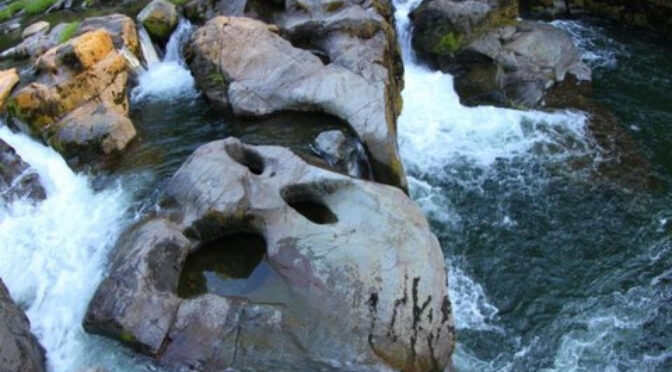This article was published by Wall Street International on Sunday October 3, 2021.
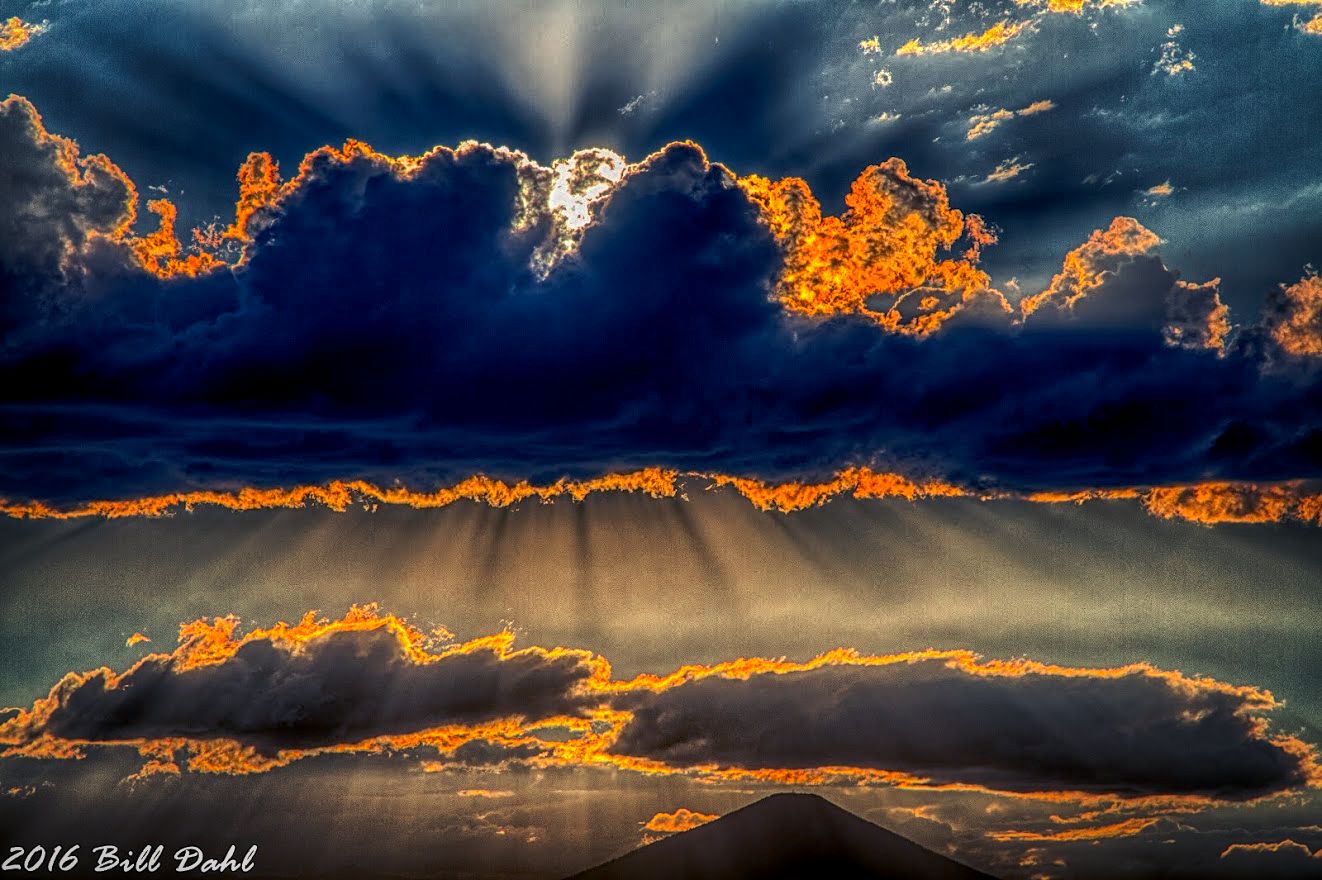
The Baby Boomers
I’m considered a Baby Boomer – supposedly the largest generation born in the USA post WWII between 1946 and 1964. According to some demographic experts, Millennials (ages 18-34) will surpass the number of Boomers in the U.S. in the near term, followed by the Gen X’ers (ages 35-50) in 2028.
Although generations are considered “analytical constructs,” groupings of births in a specific country during a specific era for the purposes of study by social scientists, we often overlook the fact that the labels we use to create generation members, disguise the fact that they are composed of living, breathing human beings.
For Boomers, more has been written about my oftentimes maligned cohort than any other generation. I won’t recount that here. Here are some things that have come to mind that only Boomers can truly appreciate – as we have lived it – together:
- Remember the “party line” on your parents’ home telephone service?
- C:/
- Black and white television – with three channels and tin foil wrapped “rabbit ears” or a rooftop antenna.
- VHS v. Beta
- Smoking was allowed on airline flights.
- Practicing “atomic bomb/civil defense drills” as a student in school – covering your head beneath your desk with your teacher and fellow students.
- Gasoline was 23 cents a gallon.
- A movie ticket was 30 cents.
- A lift ticket at a ski resort was three bucks.
- The milkman
- There was no such thing as a microwave oven or a remote control.
- Carbon paper.
- The day your rotary dial phone was replaced with a push button phone.
- A carton of milk at school was two cents.
- Vinyl 45 RPM records with the big hole in the middle.
- Drive-in movies.
- The term “communist” was heard frequently.
- Automobiles had no seat belts.
- Garbage trucks had nothing to lift the garbage cans with – except garbage men.
- A dishwasher was a human – not a machine.
- The mailman walked to every home to deliver the mail.
- The term “software” referred to pajamas, sweat pants and sweatshirts.
- Police cars had red flashing lights.
- Nurses wore white outfits with white caps.
- An eye pad was something one wore over an injured eye.
- There were only about a dozen different kinds of beer.
- Hubcaps were standard on all automobiles.
- Tattoos were seen almost solely on men – typically those who had served in the U.S. Navy.
- Portable music was solely available on a transistor radio or in your car.
- Amazon was a rain forest in a faraway place.
Yes, things change during a lifetime; including the challenges that emerge over the course of the life journey. For Baby Boomers, these challenges included the civil rights movement, the Vietnam War, voting rights, women’s rights, 9/11, religious squabbles, discrimination, racism, LGBTQ rights, equal opportunity, wars in the Middle East, ongoing threats of domestic and international terrorism, technology, economic progress, The Great Recession, and reproductive rights for women – to name several.
The Legacy
Every generation leaves a multi-faceted legacy – both positive and negative – for the forthcoming generations to enjoy and/or create solutions to challenges that continue to emerge. The “progress” that has been touted throughout the past 70 years has come with an unimaginable and unforeseen price; a planet convulsing amidst human caused climate change.
In a superb paper entitled Well Under 2 Degrees Celsius: Fast Action Policies to Protect People and the Planet from Extreme Climate Change – A Report of the Committee to Prevent Extreme Climate by Change by V. Ramanathan, M. L. Molina, and D. Zaelke et al., the authors state:
We have almost run out of time to address climate change. With unchecked business-as-usual emissions, global warming has a 50% likelihood of exceeding 4ºC and a 5% probability of exceeding 6ºC, raising existential questions foremost especially the poorest three billion people. Dangerous to catastrophic impacts on health of people including generations yet to be born, on the health of the ecosystem, and on species extinction have emerged as major justifications for mitigating climate change well below 2ºC. We must act now, and we must act fast and effectively. (p.3).
It is likely that as we cross the 1.5°C to 2°C thresholds we will trigger so called “tipping points” for abrupt and nonlinear changes in the climate system with catastrophic consequences for humanity and the environment (p.13).
If you can read the quotes above and remain unconcerned, perhaps this article is not for you. For me, it’s personal. For much of my life, I enjoyed exploring the forests and wilderness areas of the American West in the U.S. From 1997 through 2017, I trekked some 50,000 miles with my Black Labrador Reggie exploring, fishing, camping, backpacking and photographing the beauty of the natural wonders that surround us. Today, a return to many of those areas reveal the interminable scars of wildfires that have seared over 5 million acres (2,023, 428 hectares) of forests (in 2 years). Streams have been eviscerated as ash and mud now saturate their former channels. Drought has decimated rivers and their attendant ecosystems. Spawning salmon are endangered. Glaciers in Montana’s Glacier National Park have been degraded so extensively that it is expected they will soon disappear. Ecotourism has increased human traffic in many wilderness areas so dramatically that permits are now required to manage the humans tromping through nature. Smoke from wildfires has contributed to communities suffering from unhealthy air quality from May through September each year. The days of looking forward to the spring, summer, and early fall seasons for treks into the wilderness areas of the American West are no longer akin to what they used to be – just a few years ago.
For the Baby Boom generation, the price of progress has been to bequeath the climate crisis to the next generations to resolve. Of course, Baby Boomers currently remain in critical political and economic leadership positions around the globe, and have their hands on the levers of power. To be fair, the factors that have arisen to create the climate crisis existed before Boomers were born. Yet, it is the Baby Boom generation that has both accelerated the momentum and magnitude of the crisis, as well as its ongoing, unfolding severity.
Impediments to Progress
After spending the last several years studying the climate crisis, I have arrived at several observations which remain impediments to developing and implementing holistic, effective, and comprehensive climate crisis solutions. I have defined these impediments in a series of articles published in Wall Street International Magazine. In the first piece in the series I define the impediment of cognition. In the second piece, I address the challenge of human collaboration. In the third article in the series, I address the creativity crisis. Finally, in a summary piece, I outline the intersections where cognition, collaboration, creativity and chronology collide. Please read these articles for an in-depth analysis of current impediments to progress.
Einstein once said:
“We can’t solve problems by using the same kind of thinking we used when we created them.”
Where is the big thinking regarding solutions to the climate crisis? Where are the networks of Earth orbiting carbon collection mechanisms? Where do we store/release what we collect? Why not prohibit the construction of new coal-fired plants today? Why not restrict automobile driving worldwide to only 2 days a week? Where is the development of explosive oxygen depleting ordinance that can detonate above the forest canopy and stop the advance of destructive wildfires? The days of fighting wildfires with humans and shovels supported by aircraft dropping fire retardant are over; requiring the invention and adoption of new technologies that are a logical leap beyond the current approach. Global wildfires are reported to have emitted 2.7 billion tons of carbon during June through August this year alone. Why not halt financial subsidies to the fossil fuel industry tomorrow? If I asked you to choose one of three comprehensive climate crisis solutions, could you name one? I can’t, because there are not three, two or even one to choose from!
Currently, we require big, bold, global solutions to consider. Where are they?
The “old economy” remains a current reality. Economies are inhabited by inertia. Inertia in this sense is the energy that guides and defines our daily, socio-economic priorities. This energy is primarily intended to support existing forces maintaining our entrenchment in the fossil-fuel economic infrastructure.
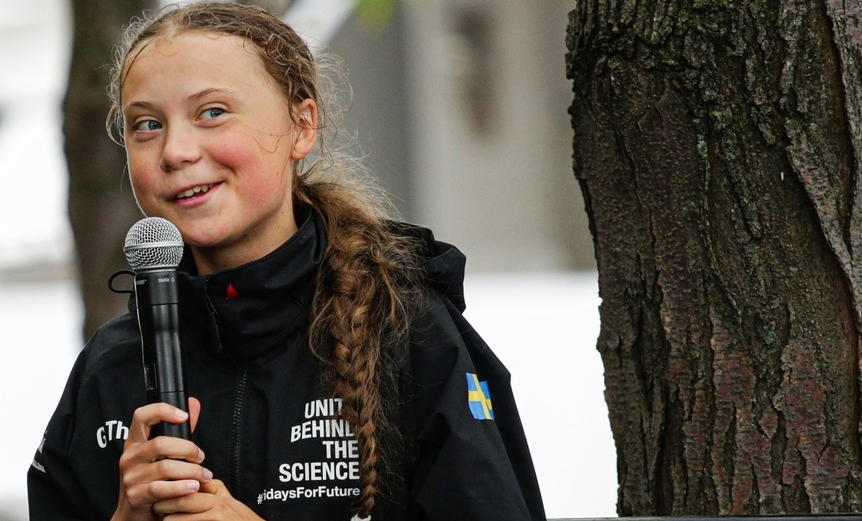
In a VOGUE article, Sweden’s then 15 year old Greta Thunberg stated:
“We live in a society designed to make us buy more, spend more, eat more – and think and care less about the impact we’re having on the environment. Salvation from this climate crisis will not come in the shape of a reusable cup or a bag for life. Our bamboo spoons won’t dig us out of the pit of environmental damage. We are all firmly embedded in a broken system, and so the system must change.”
At age 15, Greta Thunberg spoke to political and economic leaders at The World Economic Forum in Davos, Switzerland. Thunberg was nominated for the Nobel Peace Prize in March 2019. A few months later, she became the youngest individual ever to be honored as Time Magazine’s Person of the Year. Thunberg has visited with former U.S. President Barack Obama and has spoken before the U.S. government’s House Foreign Affairs Committee and the House Select Committee in Washington D.C. Donald Trump mocked her. Greta embodied the sentiments of hundreds of millions of others when she said:
“You have stolen my dreams and my childhood with your empty words. And yet I’m one of the lucky ones. People are suffering. People are dying. Entire ecosystems are collapsing. We are in the beginning of a mass extinction, and all you can talk about is money and fairy tales of eternal economic growth. How dare you!”
Generation Q – Bugles of Social Change
Today, UN Secretary General Antonio Guterres declared humanity is on the path for a “hellscape” of rising global temperatures that will become increasingly catastrophic. G20 leaders will gather in October followed by the 26th UN Climate Change Conference of the Parties (COP26) in Glasgow on 31 October – 12 November 2021. Twenty-sixth? Are you joking? Somebody listen to Greta!
Greta Thunberg (and millions of her ilk) represents the emergence of what I refer to as Generation Q. This generation is populated by people like Greta, whom I refer to as the Questians. They are the ones who speak truth to power – boldly and courageously. In one sense, the term Questians is an experiential exercise using language, experience, history and vision to put legs, feet, hands, hearts, faces, pulse, breath, eyes, ears, actions, motives, mindset and voices to this reality. Charles Handy has said:
“Words are the bugles of social change — “When our language changes, behavior will not be far behind.”
(Handy, Charles The Age of UNREASON Harvard Business School Press Copyright © 1994 p. 17.)
Greta represents her generation as a Questian. The term is a symbol, that acts like a framework for inviting people of the quest (Questians) to a place where we can celebrate this dimension of the reality of our lives together. It is an invitation, rather than a label. It is a festival about coming out and coming together. It’s a celebration of the human creative capacity. Rather than solely an individual characteristic, it is also way of living. For organizations, Questians hold the promise for the realization of the potential of the enterprise. We notice the novel. We exude the excitement essential to experiment. We’re listeners and observers. The quest inhabits the ways we serve, the reverence we exhibit for the gift of life, and the compassion that dwells in our hearts. We are those who cherish our endowment to ponder, wonder, question and stand in awe. We possess perspectives on the prospects. Questians are propelled by the courage to move beyond man-made boundaries. We’re a curious lot. Our kind provides the inertia for innovation, the energy for exploration, and the drive for discovery. We possess the audacity to advocate for potential. We ask why, what if and what about? We’re nuts about networks where nodes of ideas knock noggins. Dialog and discourse are precious to us. Conversations are cherished along with the dignity deserved by those who share viewpoints contrary to those we currently cradle. We’re typically suspect of certainty and comfortable with the contrary. We’re apprehensive about answers that come in a box. We treasure learning and the privilege to be a part of the ongoing positive transformation of our species, and the civilizations and cultures we’re creating; including imagining and moving toward new iterations of the same that can and must emerge. We’re all about erecting bridges; constructing and connecting new and essential relationships that have heretofore eluded us. We appreciate the intrinsic value of sacrifice and sharing. We’re willing to be wrong and concede the need for concession and reconsideration. Hope fills our veins as creativity throbs through our brains. We know there is more to be known.
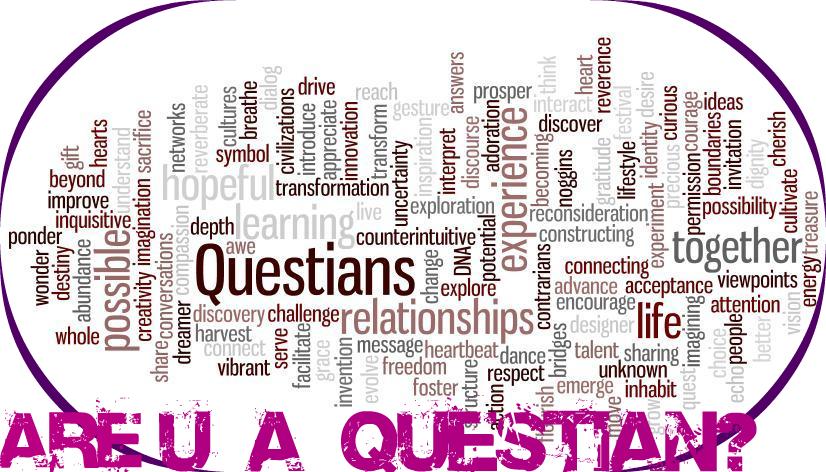
Ours is a symbol of permission. It’s an expression of acceptance, adoration and gratitude for the precious privilege and responsibility that inhabits our daily breath. It is a tangible image embodying the realization of who we are and what we can become. It is a representation of those who cherish the freedom of learning to become the one’s dedicated to freely living more fully today. It is an expression of the essence of the inquisitive and the curious. It is the heartbeat of the hopeful and the icon of the inquisitive. It is the source of desire within the dreamer, the designer and those dedicated to visions of a better destiny. We are the people of the possible.
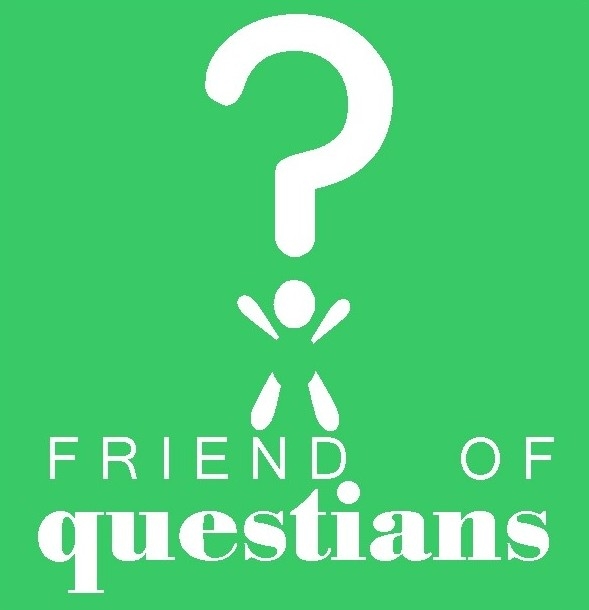
Remember, “Words are the bugles of social change — “When our language changes, behavior will not be far behind.”
In my next several pieces, I will define and illustrate The Questians more extensively.
Stay tuned! In the meantime, consider this question; Are you a friend of Questians?


